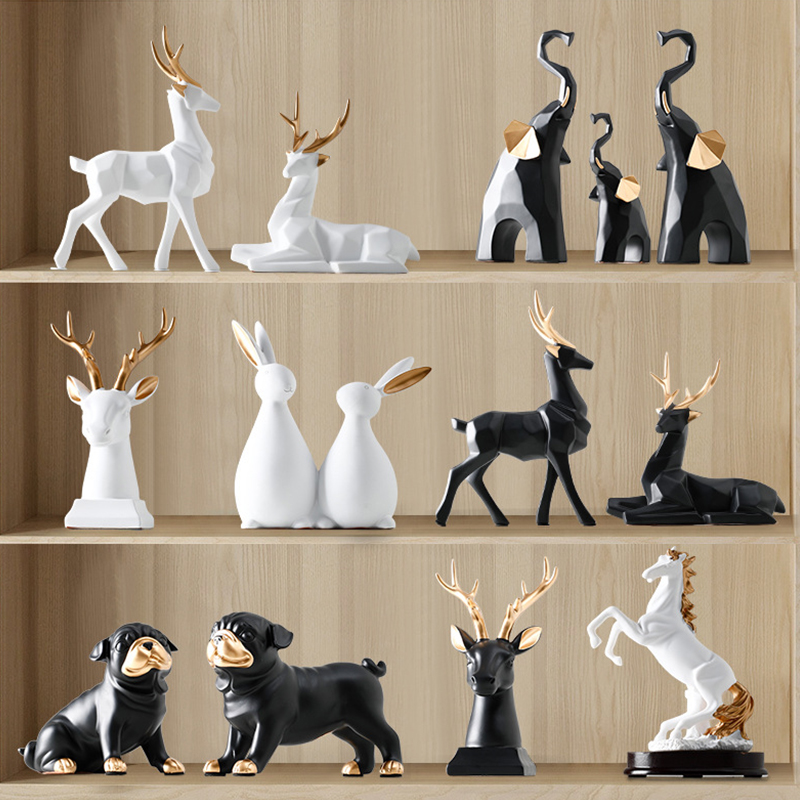How to make the appearance of iron handicraft ornaments more refined through the polishing process of iron handicraft?
Improving the appearance of Iron Handicraft Ornaments through polishing can make the surface of the ornaments smoother, more delicate and shiny, while removing burrs and uneven areas to make it look more refined. Here are some common polishing tips and methods that can help achieve a refined appearance during the polishing process:
1. Choose the right polishing tools and materials
Different ornaments and designs require different polishing tools. Common polishing tools include:
Handmade sandpaper: Use sandpaper of different coarseness and fineness (for example, coarse sandpaper, medium sandpaper, fine sandpaper) to gradually polish and remove the roughness of the surface.
Electric grinder: For larger ornaments, electric grinders can more efficiently remove surface defects.
Polisher: Used for detailed grinding and polishing, which can make the iron surface smoother and brighter.
Metal grinding blocks: Manual or electric metal grinding blocks can also be used to remove larger rust or uneven areas.
Choose the appropriate grinding tools and materials based on the size, shape and material of the ornament.
2. Step-by-step grinding
In order to achieve a refined effect, you can follow the steps below to grind:
(1) Rough grinding stage
Use coarse sandpaper (such as 100 to 180 mesh) to remove large surface unevenness, burrs, rust or welding points at the beginning of grinding.
Key areas: Pay special attention to the connection parts (such as welding points) when grinding. These places are often uneven and easily affect the appearance.
When using electric grinders, maintain a certain pressure to ensure that the grinding is even and no obvious marks are left.
(2) Fine grinding stage
Use medium sandpaper (such as 240 to 400 mesh) to further refine the surface, remove the marks left by rough grinding, and make the surface smoother.
For curved surfaces and small decorative parts, manual grinding can provide higher precision and make the contours softer and more delicate.
(3) Polishing stage
After grinding, use fine sandpaper (such as 600 mesh or above) or polishing cloth to perform a final fine polish on the surface of the ornament to make it smoother and remove minor surface defects.
For a brighter effect, you can use metal polishing paste for the final polishing to make the ornaments present a metallic luster and increase the visual sophistication.
3. Control of polishing direction and strength
During the entire polishing process, the polishing direction should be consistent. You can choose to polish along the texture direction of the iron surface to avoid leaving unnatural grinding marks.
Control the polishing strength, especially in the fine polishing and polishing stage, it is not advisable to apply excessive force to avoid damaging the surface details.
4. Detail processing
For some parts with delicate details (such as carvings, patterns, etc.), small grinding tools (such as grinding wheels, fine grinding blocks) can be used for fine polishing to avoid damaging the fine craftsmanship.
For local rust or dirt, you can use detergent and fine cloth to wipe and clean to maintain the exquisiteness of the ornaments.
5. Rust prevention and surface protection
After completing the polishing and polishing, the ornaments can be treated with rust prevention, such as applying a protective layer of rust-proof oil or varnish, which can not only maintain the luster of the ornaments, but also prevent the external environment from corroding the iron art.
A clear coat or metal protector can enhance the durability of the ornaments and make their shine last longer.
6. Practice and experience accumulation
Polishing is a process that requires experience. Different iron materials, ornament shapes and design styles may require different polishing techniques. With practice, you will better master how to carefully handle each detail to make the iron ornaments more refined.
With the right polishing tools and techniques, you can make the appearance of Iron Handicraft Ornaments more refined and delicate. Gradually carry out rough grinding, fine grinding, polishing, and then combine detail grinding and rust prevention. The final ornament will show higher craftsmanship and visual effects. If you have specific production questions or want to know the polishing techniques of a certain material, you can always let me know, I am happy to help!


 English
English Español
Español












